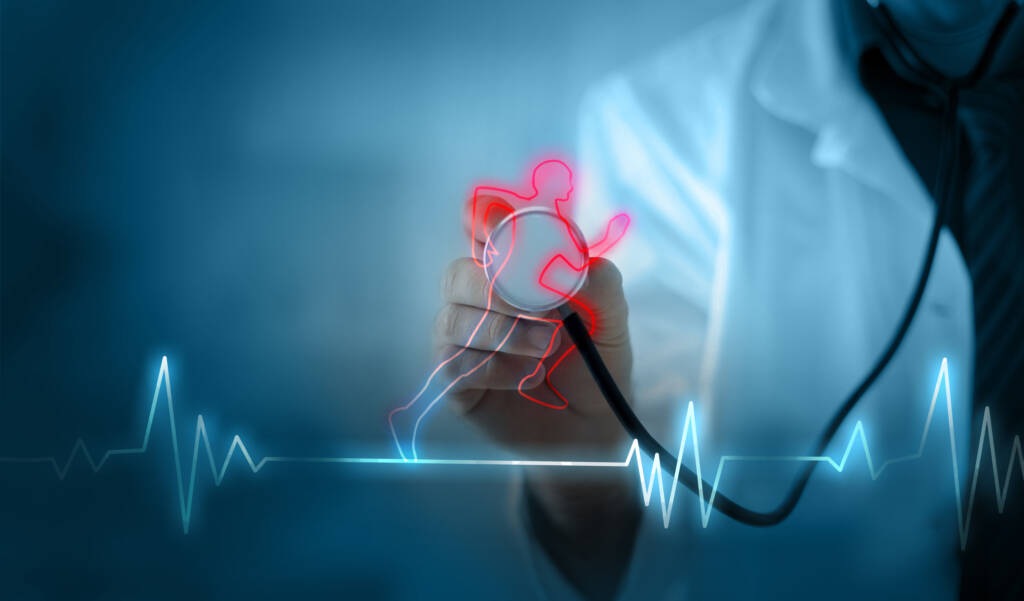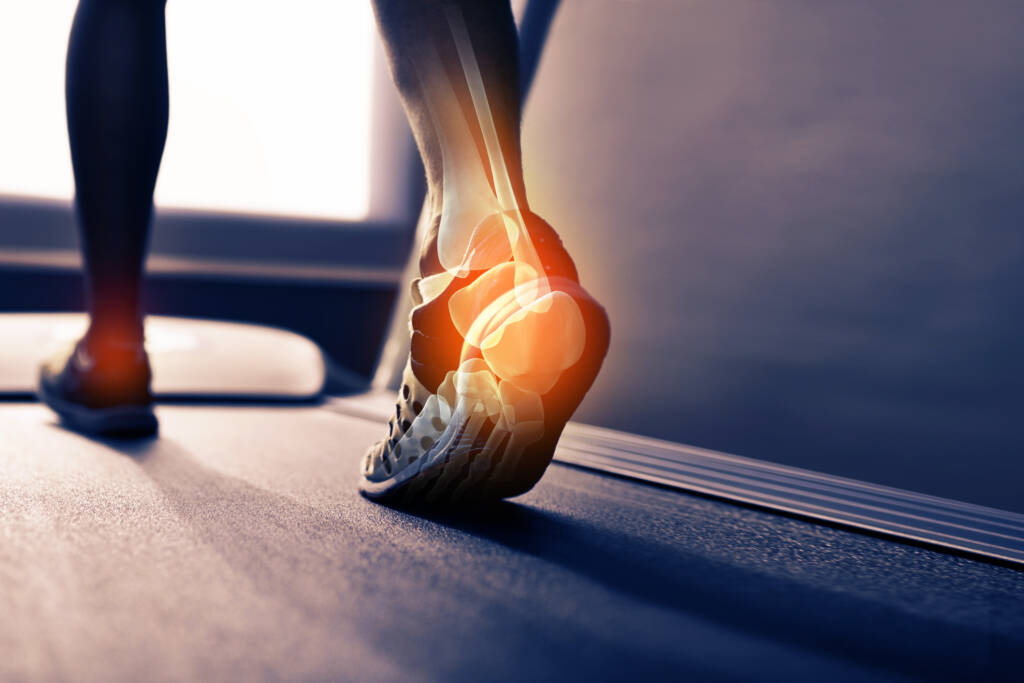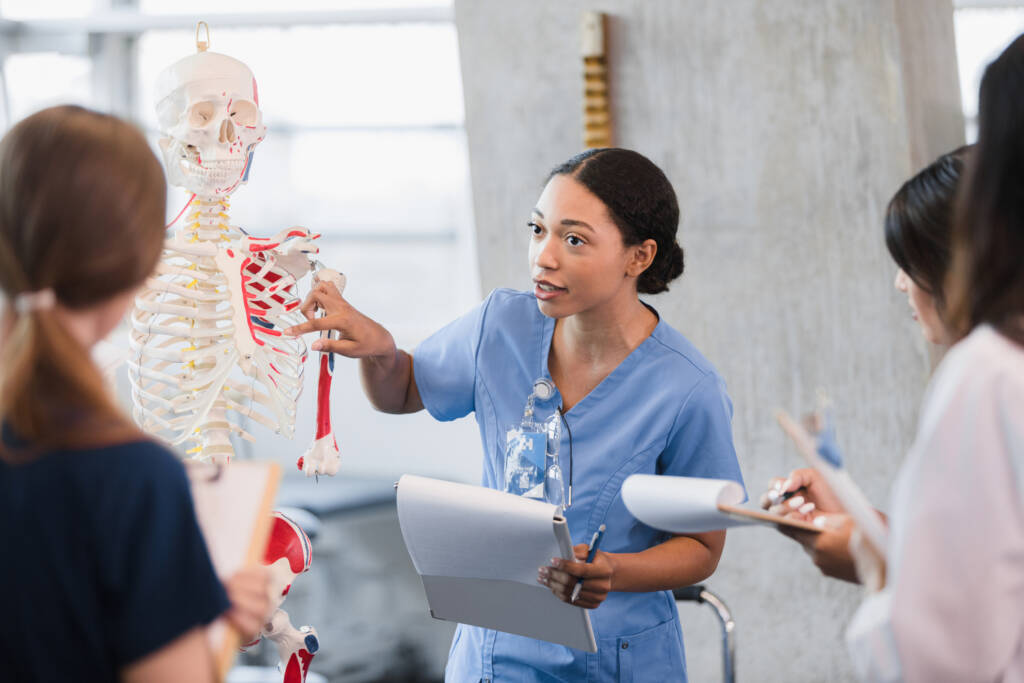
Sports Medicine 1a

Sports Medicine 1a: Introduction
What do you think of when you hear the phrase “sports medicine professional”? Believe it or not, the term encompasses a much larger range of career options than jobs typically associated with this field. Explore some of the most popular career pathways, day-to-day responsibilities, emergency care for athletes, and legal obligations. Discover what nutrition, healthy lifestyle, and fitness truly mean, and dive into anatomy, human biomechanics, and exercise modalities. Learn how to get started in this exciting field.
During this course, you will learn career-related skills and earn a badge for this accomplishment. A badge is a digital certification of your career-related learning that you can share on social media and higher education platforms, or with colleges, potential employers, peers, and colleagues. Select this link to learn more about badges.
Major Topics and Concepts
Unit 1: Sports Medicine in Action
- Explore and explain the responsibilities of professionals in the sports medicine industry
- Discuss the legal obligations of a sports medicine professional
- Identify the day-to-day duties of a healthcare professional
- Describe the code of conduct and ethical responsibilities of any member of the athletic healthcare team
- Understand the importance of a lifetime of healthy living
Unit 2: Psychology, Healthy Living, and Body Image
- Define “fitness” and identify what a typical healthy lifestyle looks like
- Analyze the relationship between the brain and the body and how one affects the other
- Understand how pain and stress interact with overall health and how they lead to issues like drug abuse
- Recognize the causes, signs, and symptoms of eating disorders
- Develop strategies for planning healthy lifestyle
Unit 3: Introduction to Nutrition
- Discuss why nutrition is important to overall health
- Name and define the six classes of nutrients essential for health
- Distinguish between macro- and micronutrients
- Evaluate the dietary reference intakes for nutrients and how they apply to individuals
- Analyze the parts and meanings of a nutrition label
- Think critically about choosing a healthy diet versus a fad diet
Unit 4: Basics of the Body: Understanding Anatomy
- Identify and describe the major functions and structures of the skeletal systems
- Describe and classify the types of joints in the human body
- Name and explain the purpose of the various layers of bone
- Understand the basic structure of organ systems of the body and how they work together
Unit 5: Exercise Modalities
- Implement various modalities into the different phases of the progressive training model
- Describe common special considerations that will need to be made with various populations
- Evaluate appropriate program design protocol for various populations
- Identify fitness technologies used by fitness professionals
Unit 6: Communication and Coaching
- Communicate effectively with clients
- Motivate unmotivated individuals starting an exercise program
- Distinguish between different communication styles
- Understand the stages of behavior change
Unit 7: You’ve Got the Moves: Human Biomechanics
- Define biomechanics and explain the role it plays in an exercise training program
- Understand and explain the relationship between anatomical locations and planes of motion in basic biomechanics principles
- Describe axes of reference and labeling of muscle actions
- Use and apply anatomical terms, planes, and motions to create exercise programs
Unit 8: Emergency Preparedness
- Identify the importance of an emergency action plan
- Describe the components of an emergency action plan
- Perform the assessment to determine the state of an injured athlete’s vital signs
- Understand how to perform CPR and AED
- Utilize methods of protection against bacterial infection
Competencies
Sports Medicine in Action
Students will demonstrate an understanding of sports medicine in action by explaining the day to day, ethical, and legal responsibilities of sports medicine professionals, and the components of lifelong healthy living.
Healthy Living: Mental and Physical Components
Students will demonstrate an understanding of the mental and physical components of healthy living by describing strategies for a healthy lifestyle; explaining the brain-body relationship; describing nutrition, eating disorders.
The Body: Anatomy and Exercise Modalities
Students will demonstrate an understanding of anatomy and exercise modalities by describing the structure and function of the skeletal system; and explaining fitness technologies and modalities in progressive training models.
Working with Clients: Communication and Biomechanics
Students will demonstrate an understanding of working with clients by describing effective communication with clients and communication styles, motivation, stages of behavior change; explaining basic biomechanics principles, role of biomechanics in fitness program, and exercise programs design.
Emergency Preparedness
Students will demonstrate an understanding of emergency preparedness by explaining the function and components of an emergency action plan, first aid procedures; injury assessment, and methods of protection from bacterial infection.

